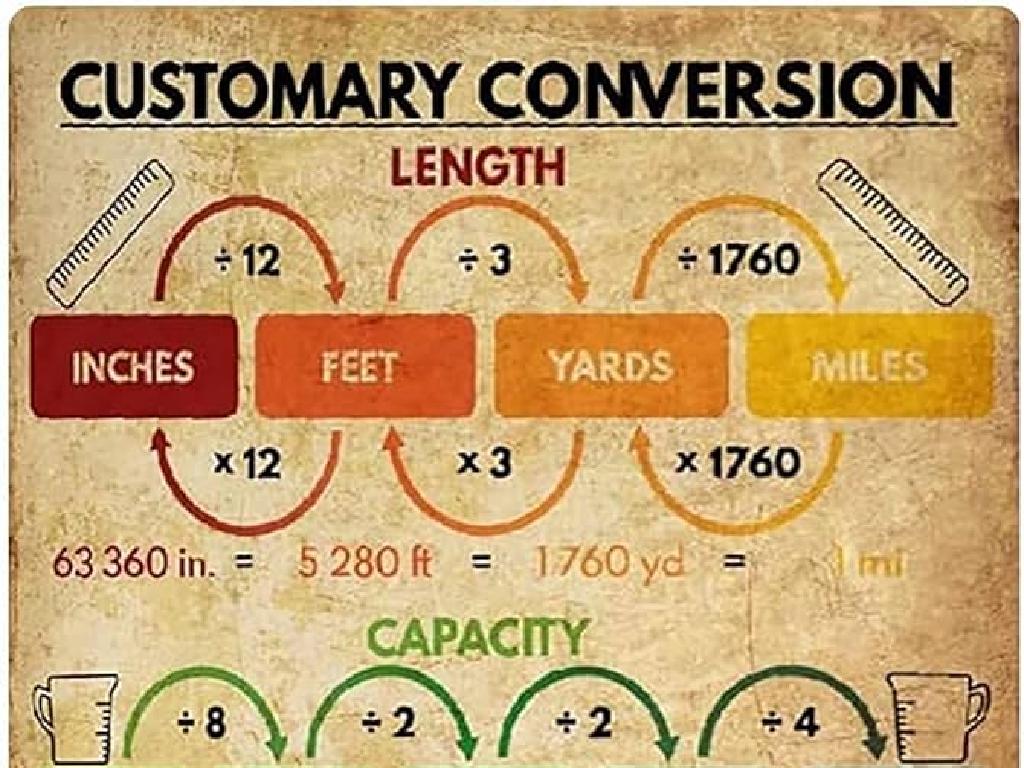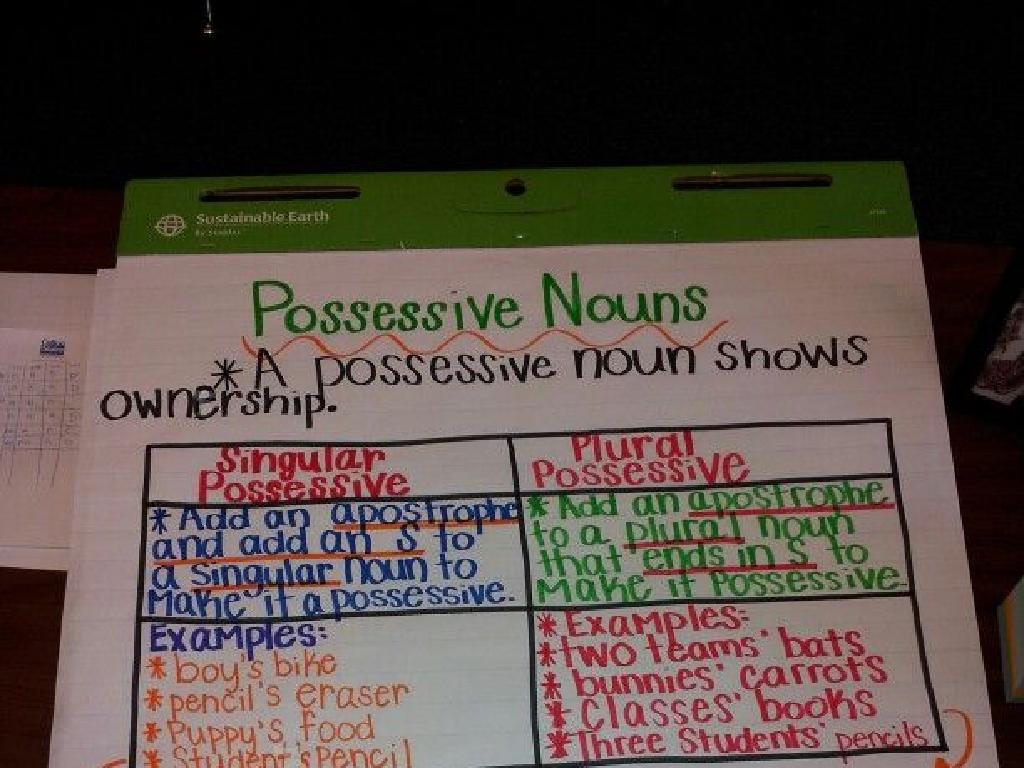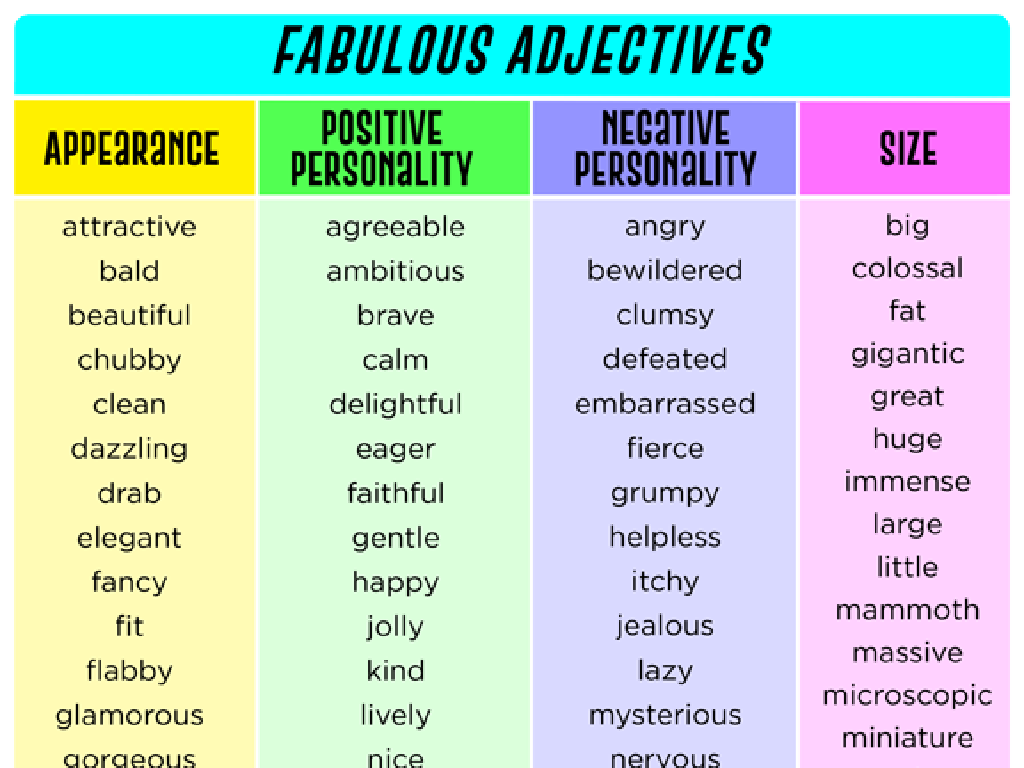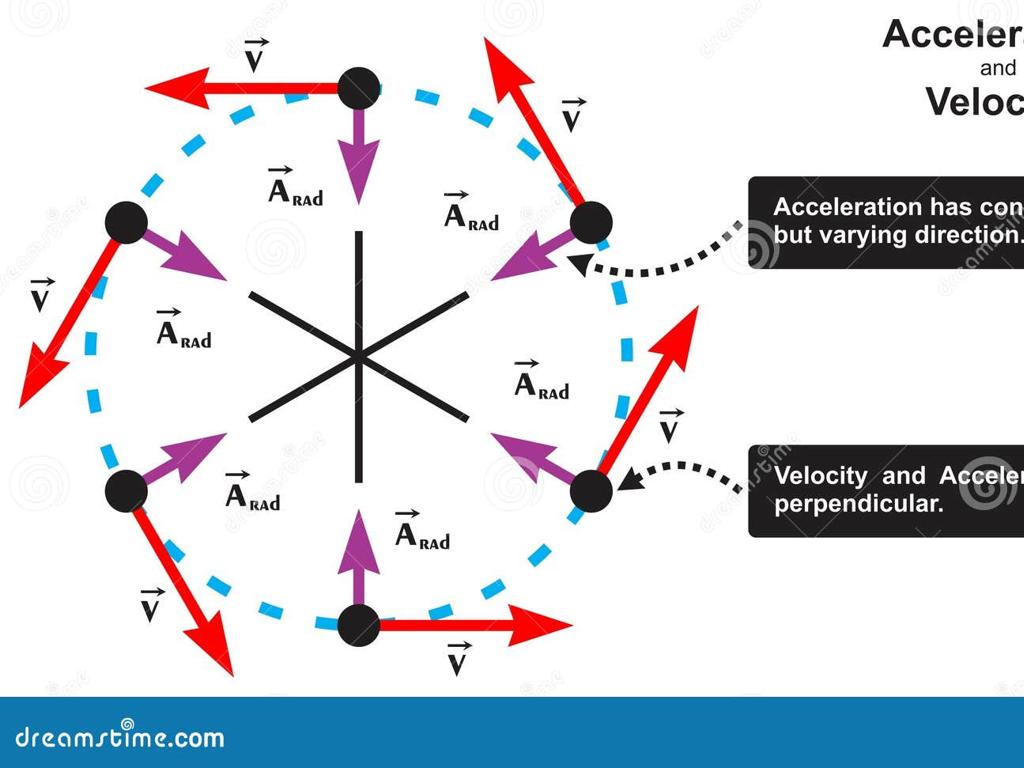Use Compensation To Add Or Subtract: Up To Three Digits
Subject: Math
Grade: Third grade
Topic: Mixed Operations: Addition And Subtraction
Please LOG IN to download the presentation. Access is available to registered users only.
View More Content
Welcome to Mixed Operations!
– Learn the math trick: compensation
– Compensation is adjusting numbers to make them easier to work with.
– Simplify addition and subtraction
– Instead of adding 398 + 202, round 398 to 400, then add 200, and adjust the answer.
– Become a math detective
– Use your ‘detective skills’ to spot when to round numbers up or down.
– Find easy solutions to problems
– Practice with examples to master finding the simplest way to calculate.
|
Today’s lesson introduces the concept of compensation, a useful technique for simplifying addition and subtraction problems. Explain to students that compensation involves adjusting numbers to a rounder, more manageable form, making mental math quicker. Demonstrate how rounding numbers before adding or subtracting can make the process easier, and then adjusting the final answer to account for the rounding. Encourage students to think like detectives, looking for clues in the numbers that suggest when and how to use compensation. Provide several examples and practice problems to help them become comfortable with this strategy.
Understanding Compensation in Math
– What is compensation?
– It’s a way to adjust numbers to simplify addition or subtraction.
– Balancing numbers for ease
– Think of it like balancing scales to make adding or subtracting smoother.
– Rounding as a form of compensation
– Round a number up or down to make mental math quicker.
– Correcting the final answer
– After using compensation, we adjust the sum or difference to get the right answer.
|
Compensation is a useful strategy for making mental math easier by adjusting numbers to more ‘friendly’ values. For example, if adding 398 + 202, a student might round 398 to 400, add it to 202 to get 602, and then subtract 2 to compensate for the rounding, arriving at the correct answer of 600. This slide will introduce the concept of compensation and how it can be applied to addition and subtraction problems. Encourage students to practice with different numbers and to share their strategies. Emphasize the importance of correcting the final answer after compensating to ensure accuracy.
Why Use Compensation in Math?
– Simplifies addition and subtraction
– Turns tricky problems into easier ones
– Handy for larger numbers
– Avoids long columns of numbers
– Helps check work for mistakes
– Double-check answers by compensating differently
– Makes calculations faster
– Save time on tests and homework
|
Compensation is a useful technique for making mental math quicker and more efficient, particularly with larger numbers. By adjusting one number to a round figure, then compensating with the other number, students can simplify the problem. For example, to add 398 + 202, one can adjust 398 to 400 by adding 2, then subtract 2 from 202, making the new problem 400 + 200. This strategy not only speeds up the process but also serves as a valuable tool for verifying the accuracy of their work. Encourage students to practice this method with different numbers and to use it as a checking mechanism to ensure their answers are correct.
Compensation in Addition
– Start with 398 + 127
– Round 398 to 400
– Makes adding easier with round numbers
– Add 400 + 127
– New sum is 527
– Subtract the extra added
– Compensate by subtracting 2
|
This slide introduces the concept of compensation in addition, a useful mental math strategy for adding numbers more easily. By rounding a number to the nearest ten or hundred, students can simplify the addition process. After finding the sum with the rounded number, they need to adjust the answer by subtracting the amount they added during rounding. This technique helps improve calculation speed and accuracy. Encourage students to practice with different numbers and to explain their thought process as they use compensation.
Compensation in Subtraction
– Start with 456 – 112
– Round 112 to 110
– Makes subtraction simpler
– Subtract to find the difference
– 456 – 110 = 346
– Adjust for the compensation
– Add back the 2 we subtracted from 112
|
This slide introduces the concept of compensation in subtraction, a strategy to simplify calculations. Students start with the problem 456 – 112. To make subtraction easier, they round 112 down to 110. After subtracting 456 – 110, they get 346. Since we adjusted 112 down by 2 to make it 110, we need to add those 2 back to the result to compensate. The final answer is 346 + 2 = 348. This method helps students manage larger numbers by simplifying the subtraction process. Encourage students to practice this technique with different numbers to become comfortable with the concept of compensation.
Let’s Practice Compensation Together!
– We’ll solve examples as a class
– Step-by-step compensation method
– Adjust numbers to make them round, then correct them
– Making mistakes is part of learning
– Encouragement to try independently
– After our practice, try doing it on your own with confidence
|
This slide is designed for an interactive class activity where the teacher will guide students through the process of using compensation to add or subtract numbers up to three digits. Start by working through a few examples on the board, explaining each step clearly. Emphasize that compensation involves rounding numbers to make mental math easier, then adjusting the answer to account for the rounding. Remind students that making mistakes is a natural part of the learning process and encourage them to participate actively. After the guided practice, students should be encouraged to apply the compensation strategy independently, reinforcing their understanding and building confidence.
Your Turn to Try: Compensation in Addition & Subtraction
– Solve problems using compensation
– Add or subtract to a nearby round number, then fix the answer
– Partner up and investigate like math detectives
– Two heads are better than one! Work together to find solutions
– Remember to adjust the final answer
– If you added too much, subtract it. If you subtracted too much, add it back
– Share your strategies with the class
|
This slide introduces an interactive class activity where students will apply the concept of compensation to solve addition and subtraction problems. Compensation is a strategy where you round a number to make the math easier, and then fix your answer at the end. For example, if the problem is 299 + 123, you can round 299 up to 300, add to get 423, and then subtract 1 to compensate for the rounding. Encourage students to work in pairs to foster collaboration and to discuss their thought processes. After solving, they should adjust their answers if they compensated at the beginning. At the end of the activity, ask some pairs to share their strategies and solutions with the class to reinforce learning and to showcase different approaches to the same problem.
Class Activity: Compensation Challenge
– Work in groups for math problems
– Use compensation to solve quickly
– Compensation means adjusting numbers to make them easier to work with
– Review answers as a class
– Celebrate our math victories!
|
This activity is designed to encourage collaborative problem-solving and to practice the concept of compensation in arithmetic. Divide the class into small groups and provide each with a set of mixed addition and subtraction problems involving three-digit numbers. Encourage students to use compensation, which involves rounding numbers to make mental math easier, and then adjusting the answer accordingly. For example, if the problem is 299 + 123, they might round 299 up to 300, add to get 423, and then subtract 1. After the activity, bring the class together to review the answers, discuss different compensation strategies used, and celebrate correct solutions. This reinforces the concept and builds confidence in their mathematical abilities.
Conclusion: Mastering Compensation in Math
– Understanding compensation
Compensation is adjusting numbers to make them easier to add or subtract.
– Using compensation in math
Add or subtract a little more to a number, then adjust back to get the right answer.
– Practice makes perfect
– Celebrating our math detectives
You’ve worked hard understanding compensation keep it up at home!
|
This slide wraps up the lesson on using compensation for addition and subtraction. Start by recapping the concept of compensation, which is a mental math strategy that involves adjusting numbers to make calculations easier. Explain how this technique can simplify the process of adding or subtracting three-digit numbers. Emphasize the importance of practice to become proficient in this method. Finally, acknowledge the students’ efforts and progress in becoming ‘math detectives’ who can solve problems using compensation. Encourage them to continue practicing at home to reinforce their skills. Provide examples and suggest fun activities for practice, such as adding prices on a shopping list or calculating the total time spent on chores.





